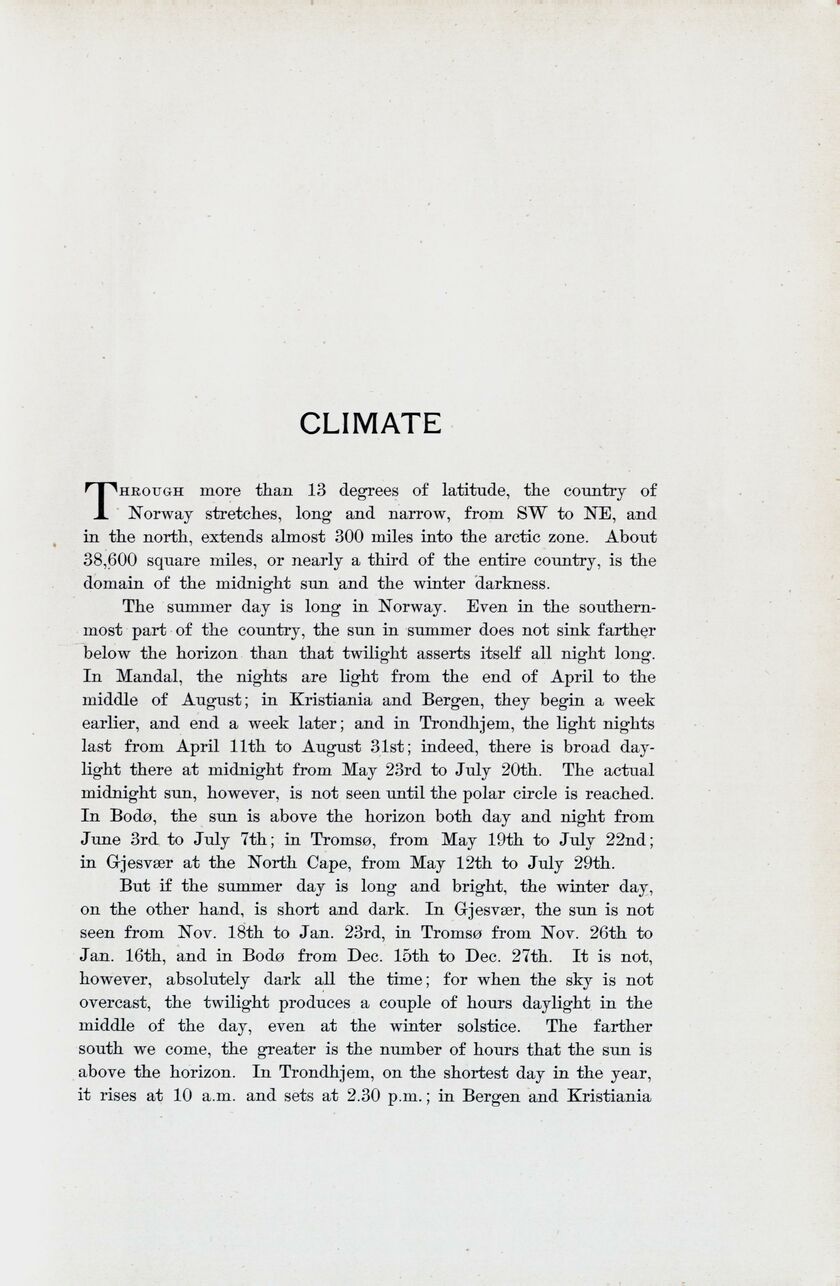
Full resolution (JPEG)
- On this page / på denna sida
- Climate, by Axel Steen

<< prev. page << föreg. sida << >> nästa sida >> next page >>
Below is the raw OCR text
from the above scanned image.
Do you see an error? Proofread the page now!
Här nedan syns maskintolkade texten från faksimilbilden ovan.
Ser du något fel? Korrekturläs sidan nu!
This page has been proofread at least once.
(diff)
(history)
Denna sida har korrekturlästs minst en gång.
(skillnad)
(historik)
CLIMATE
Through more than 13 degrees of latitude, the country of
Norway stretches, long and narrow, from SW to NE, and
in the north, extends almost 300 miles into the arctic zone. About
38,600 square miles, or nearly a third of the entire country, is the
domain of the midnight sun and the winter darkness.
The summer day is long in Norway. Even in the
southernmost part of the country, the sun in summer does not sink farther
below the horizon than that twilight asserts itself all night long.
In Mandal, the nights are light from the end of April to the
middle of August; in Kristiania and Bergen, they begin a week
earlier, and end a week later; and in Trondhjem, the light nights
last from April 11th to August 31st; indeed, there is broad
daylight there at midnight from May 23rd to July 20th. The actual
midnight sun, however, is not seen until the polar circle is reached.
In Bodø, the sun is above the horizon both day and night from
June 3rd to July 7th; in Tromsø, from May 19th to July 22nd;
in Gjesvær at the North Cape, from May 12th to July 29th.
But if the summer dav is long and bright, the winter day,
on the other hand, is short and dark. In Gjesvær, the sun is not
seen from Nov. 18th to Jan. 23rd, in Tromsø from Nov. 20th to
Jan. 10th, and in Bodø from Dec. 15th to Dec. 27th. It is not,
however, absolutely dark all the time; for when the sky is not
overcast, the twilight produces a couple of hours daylight in the
middle of the day, even at the winter solstice. The farther
south we come, the greater is the number of hours that the sun is
above the horizon. In Trondhjem, on the shortest day in the year,
it rises at 10 a.m. and sets at 2.30 p.m.; in Bergen and Kristiania
<< prev. page << föreg. sida << >> nästa sida >> next page >>
Project Runeberg, Sun Dec 10 21:09:24 2023
(aronsson)
(diff)
(history)
(download)
<< Previous
Next >>
https://runeberg.org/norparis/0057.html



